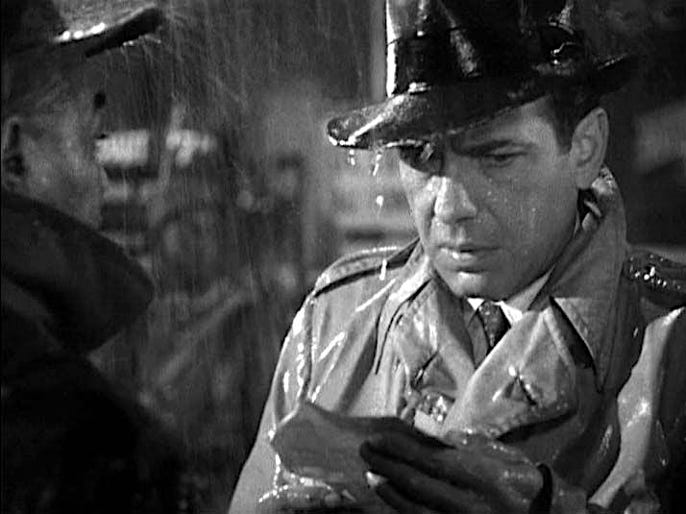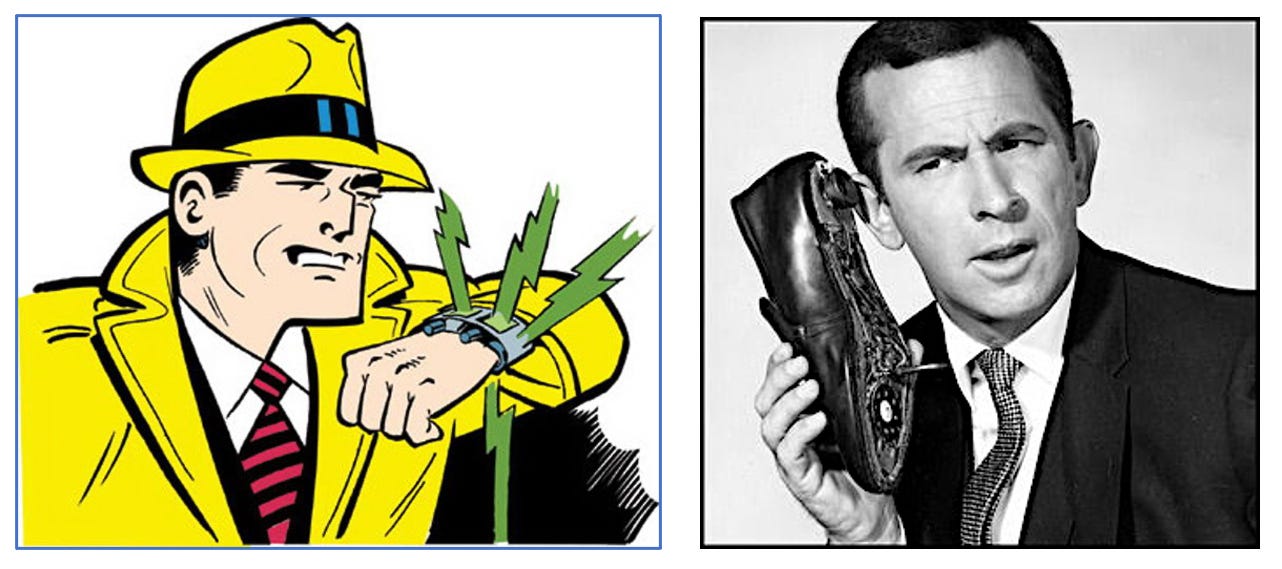How Did They Manage Before Cell Phones?
In a pivotal flashback in “Casablanca” (1942), lovers Rick Blaine (Humphrey Bogart) and Ilsa Lund (Ingrid Bergman) plan to meet at the train station so they can flee before the German army invades and occupies Paris. As Rick waits for her during a storm, his friend, Sam (Dooley Wilson), delivers her letter letting him know she won’t meet him and he is forced to leave without her. I remember thinking the last time I saw this film that if cell phones existed at the time, this painful scene would never have taken place.
Cell phones revolutionized communications, allowing instant access between parties virtually anywhere in the world. Before they were a reality, however, they were predicted in popular media. Perhaps the earliest example of this was in the comic strip “Dick Tracy” (debuted 1931). A police detective, Tracy used a “two-way wrist radio” to speak with other law enforcement and it apparently inspired Martin Cooper’s invention of the mobile phone and perhaps smartwatches.1 The comedy series “Get Smart” (1965-1970), a spy-film parody, has a bungling secret agent, Maxwell Smart (Don Adams), who communicates with “The Chief” (Edward Platt) with his shoe phone. This device might not have been as elegant as Tracy’s watch, but it was certainly more humorous. In the original “Star Trek” TV series (1966-1969), Captain James Kirk (William Shatner) and his crew often used “communicators” to speak to each other, particularly when they left their vessel, the “Enterprise.” Their equipment was evocative and credible for the futuristic program.
An early example of an actual cell phone appears in the film “The Big Lebowski” (1996). “The Dude” (Jeff Bridges), a victim of mistaken identity, seeks compensation for a damaged rug from a wealthy philanthropist with the same name. Although he refuses, he later asks him to help find his kidnapped wife. The Dude must deliver the ransom, and Lebowski’s assistant (Philip Seymour Hoffman) provides him with a cell phone, which consists of a large case for its components and a handset and base for the phone. Part of the film’s humor is watching The Dude struggle with the large apparatus as he tries to locate the kidnappers.
Only a year later, Julia Roberts (as Julianne Potter) tries to break up her best pal Michael O’Neal (Dermot Mulroney), and his fiancée, Kim Wallace (Cameron Diaz), in “My Best Friend’s Wedding.” She speaks with her friend and editor George Downes (Rupert Everett) frequently via cell regarding her progress with this mission. She uses a large flip-phone for her calls to George, which must have been cumbersome, considering all the action the film entails.
Certainly, one of the most famous (and extensive) examples of mobile-phone use is found in “Jerry Maguire” (1996). Jerry (Tom Cruise) is a sports agent who develops a conscience after one of his players is injured. He seeks a more honest and caring relationship with his athletes, but loses his job and keeps only Rod Tidwell (Cuba Gooding, Jr.) as client as he starts his own agency. Rod becomes a difficult asset to manage and Jerry goes the extra mile, making endless calls, desperate to satisfy him financially. Jerry uses a small phone, perhaps a Nokia 8110, a sleek, stylish, and highly portable device. Jerry’s line, “Show me the money!,” is heard frequently in the film and it became a pop-culture catchphrase.
Looking back at the use of cell phones in films and TV helps us see how this now-indispensable tool transformed over the past decades. Developers filled an important want/need and will continue to improve their product. It seems odd, however, to see three such different examples of mobile phones in the late twentieth century (“Lebowski,” “Wedding,” and “Maguire”), particularly in terms of their sizes. Compare The Dude and Jerry’s phones in their respective films from 1996. Amazing!
Copyright © 2024 by Rosi Prieto, Ph.D.
All Rights Reserved
https://www.smithsonianmag.com/smart-news/how-dick-tracy-invented-smartwatch-180954506/







